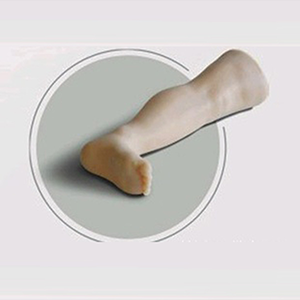10-12-2024
ADA MED SUPPLY LIMITED
Article tag: Pediatric bone puncture model BIX-FS6
Pediatric bone piercings are a common but challenging medical procedure, often used to collect bone marrow specimens or perform therapeutic piercings. Due to the small size of pediatric patients, the operation is more difficult, and patients are usually accompanied by high anxiety and discomfort. Therefore, how to ensure the accuracy of the operation and reduce the pain of patients is one of the important goals in the nursing process. ** Pediatric bone puncture model ** As an advanced medical training tool, can it provide a better nursing experience in this respect?

1. Provide a realistic training experience
Pediatric bone puncture model simulates the anatomical structure and bone characteristics of pediatric patients through simulation technology, so that medical staff can practice bone puncture operation in a simulated environment. The high degree of simulation of the model allows caregivers to more realistically perceive the touch and resistance during the piercing process, thereby improving their operational accuracy. This training not only helps the nursing staff familiarize themselves with the various steps of the piercing, but also reduces the risk and discomfort of the patient by reducing errors in the actual procedure.
- Case: By using pediatric bone puncture model for training medical staff, the success rate of puncture was increased by 25% in actual operation, and the puncture process was completed more quickly and accurately, significantly reducing the pain of pediatric patients.
2. Improve the accuracy and efficiency of operation
Pediatric bone puncture procedures involve delicate surgical techniques, and any deviation in the procedure can lead to unnecessary trauma. Using simulation models allows caregivers to practice repeatedly and improve techniques in low-risk Settings. In this way, the nursing staff can master the correct puncture technique more quickly, improve the precision and efficiency of the procedure, and ensure the comfort and safety of the patient.
- Research data show that: medical staff trained with pediatric bone puncture model have significantly improved their puncture accuracy and operation time in actual operation, especially after multiple simulation training, trainees can reduce the stimulation and discomfort to patients during operation.
3. Reduce anxiety and stress in clinical practice
Novice caregivers often feel nervous during clinical practice, especially when dealing with younger patients. The simulation model provides a stress-free training environment where participants can practice multiple times without actual risk and gradually build confidence. Through this repeated practice, the nursing staff can not only improve the technical level, but also reduce the operational errors and patient discomfort caused by tension in the clinic.
Data support: A study on simulation training showed that caregivers who received pediatric bone puncture simulation training had significantly lower stress levels and anxiety when faced with real patients, thus improving the smoothness of the procedure and patient cooperation.
4. Improve patient care experience
The application of pediatric bone puncture model can not only improve the operation level of nursing staff, but also improve the nursing experience of patients in actual operation. Through more accurate operation, the pain and discomfort of pediatric patients during puncture can be reduced, and the comfort of patients can be improved. At the same time, the nursing staff can communicate with the parents more confidently, explain the procedure and precautions, and increase the trust of the patient's family.
Case in point: In one study, health care workers using simulation training demonstrated greater gentleness and communication skills when dealing with pediatric patients, significantly increasing patient and family satisfaction.
Conclusion: It is an effective tool to improve nursing quality
Pediatric bone puncture model provides a systematic and accurate learning platform for nursing staff, helping them to better master the operation skills, improve the accuracy of the operation, and reduce the discomfort of patients. Through repeated simulation training, nursing staff can master various puncture techniques, improve self-confidence and reduce errors in actual operation. Therefore, the use of pediatric bone puncture model can not only improve the skill level of nursing staff, but also greatly improve the patient's nursing experience and ensure the smooth progress of the surgical process.